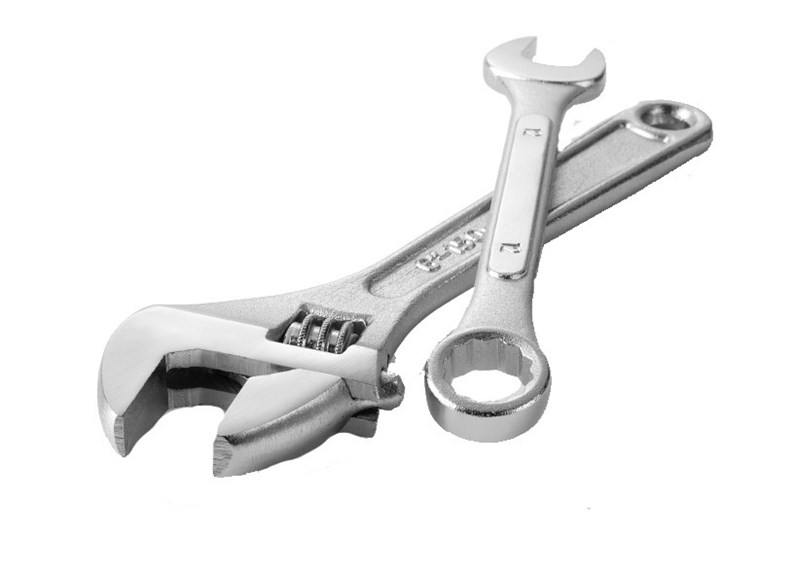Ask a veteran building manager about his scariest horror story and he may recount a freezing winter night when the heating system went kaput, leaving a 400-unit building ice cold, or the time the sprinklers decided to kick on for no reason and drench freshly remodeled hallways. Some maintenance problems are like lightning, seeming to strike at random. The truth is that city dwellers rely heavily upon various building systems for their physical comfort, and sometimes those systems fail. When they do, residents can be left hot (or cold) and angry, or wet and upset — often as much by the cost of repairs as the event itself.
Even highly dedicated associations sometimes experience maintenance nightmares—unforeseen maintenance problems that derail the everyday life of residents of the community. When these disasters happen, it's the responsibility of the management, board and staff to get things under control and back on track as quickly as possible.
Maintenance disasters aren't always unavoidable, though. With preparation, at least some of these problems can be avoided. Much of the planning for a maintenance emergency depends upon a property manager or board member knowing of potential problems. Knowing about the possibility of such problems often is a matter of knowing what areas of the property to be aware of, and also knowing what signs to look for.
Problems Could Be Out of Sight
The latent problem areas of a residential property may be hidden from view and nearly impossible to detect, as they were in the case of a maintenance problem that Tim Balitsos encountered. Balitsos, a property manager for Jersey City-based MEM Property Management, had a water problem with the downspouts and connecting underground pipes at several of his company's properties along the same street. All of the buildings were having problems with water around their foundations, when it was discovered that there were fractures in the underground pipes connected to the downspouts. The breaks in the pipes resulted in the rainwater being deposited underground, close to the building's foundation, rather than into the sewer system.
The drainage problem quickly put the buildings on increasingly soggy ground, leading to water in the basements and other problems. Balitsos says the quandary might have been avoided, even though outside circumstances were partly to blame for it.
"If you don't clear out and check your downspouts, that's what could happen," Balitsos says. "It took a while before people realized the damage that the leaks were causing, because [in one building] the water was going into a crawl space, and the sediment from the roof was building up in the pipe."
When the problem was discovered and analyzed, it turned out that the in-ground pipes for draining the rainwater had been broken by a contractor brought in recently to replace the curbs along the street, Balitsos says. MEM hired contractors to do costly excavation and to replace the in-ground drainpipes—150 feet of them at one building alone. The company also had foundation repair work done on several buildings, but by that time, the seepage situation had to led to a few more problems. Sump pumps had to be installed in the basements of the buildings and mold had begun to creep up from the basements into living and common areas, creating a potentially dangerous environment for residents. So MEM Property Management had to then hire a company to rid the buildings of the mold that flourished as a result of the wet conditions.
Such an expensive hassle might be avoided with some regular maintenance, Balitsos says. "If you do annual maintenance of the gutter system, you can probably avoid that kind of problem," he says. "Use a gutter-cleaning company, and use a plumber to check the drains and flush them periodically."
Since the water drainage fiasco, MEM has instituted a formal checklist to steer clear of such a problem in the future. The checklist ensures that each building's gutters, downspouts and ground drains are inspected and flushed in spring and in fall.
"Flushing the ground pipes twice a year will diminish the buildup of debris in the pipes," Balitsos says.
While the building maintenance problem Balitsos encountered was a hidden one, other problems can be more blatant. These obvious problems can often be avoided, though sometimes the people involved might not see it at the time. Unfortunately, such maintenance predicaments can sometimes be so overwhelming that it can lead residents to move out of a building. That type of worst-case scenario isn't inevitable, though, and can be managed when it happens.
Parking, Cool Air Lead to Hot Heads
Foresight and planning often can be key to avoiding a maintenance meltdown in a residential building or community. A lack of planning for contingencies during building renovations can actually lead to problems for residents. Robin Habacht, president of Monticello Management, Inc. with offices in Leonia and Matawan, ran headlong into such a major maintenance problem with one high-rise that her company manages. One necessity—a parking deck—led to another necessity: the need for air conditioning in the building.
"The parking deck of this particular high rise was in need of immediate replacement, and the air conditioning unit sits on this deck. In order to make repairs, the unit needed to be relocated temporarily," Habacht explained. "Theentire building was left withoutair conditioning for the months of June, July, August and September."
In order to alleviate this problem, the board of directors of the building wanted a large single air conditioning unit installed so that it would hang off of the side of the building.
"This proved to be a disaster on different levels," Habacht says. "The noise levels generated by the air conditioner violated the local noise ordinances andsubjected the building to daily noise violations. Homeowners living on the side of the building on which the machine hung, lost sleep. Some actually moved out and into friends and relatives' homes."
Habacht says in hindsight, things might have been handled differently. "We would have put individual [air conditioning] units into each window which could have reduced the overall expense of the equipment needed, and made it possible for each owner to control his air conditioning. This would also have reduced consumption," she says. "And each of the air conditioners could later be sold on the secondary market when they were no longer needed."
Monticello Management took the problem as a lesson learned, and uses it sometimes to inform their decisions.
"We learned to use it as an example to our next board.Should another board insist on following the path of hanging a unit of the side of a building, we can now show them the consequences and hopefully sway their opinion," Habacht says.
Busted Balconies
Sometimes a maintenance disaster is the result of longstanding (and unintentional) neglect of a property, as was the case with a 200-unit property that Regency Management Group recently took over managing. The 20-year-old association had never done the proper maintenance on the balconies of the property, says Elaine Warga-Murray, CEO of Howell-based Regency Management Group.
"In the past, they had maintenance men they'd hired to do work on the balconies," Warga-Murray says. "As it turns out, the balconies, which are made of wood, cannot be walked on. All of the balconies are in danger of collapsing, because they weren't maintained."
When Regency Management Group took over the community, they recommended to the association that they have the property inspected by an engineer. The engineer was hired and did a complete evaluation of the property, then consulted with Regency and association officials about areas in need of repair. Finally, the engineer was directed to write specifications for the repair work to be done on the building.
What the engineer discovered was mold build-up on the balconies (a result of the exteriors not being cleaned), as well as numerous balcony support posts that were dry-rotted. All 200 of the balconies in the community are now deemed unsafe, and residents are not permitted to use them until they are repaired. The renovation work means that the residents of the community won't have access to their balconies for more than a year.
"We have to have all of the balconies torn down and replaced, which is a $250,000 job," Warga-Murray says. "If [the association] had seen the problem five years ago, it wouldn't have cost so much."
Regency Management Group suggested to the association that action be taken to prevent such a maintenance nightmare from happening in the future. Regency officials recommended to the board that they hire an engineer to come in and inspect the property every three years, to detect any problems before they become larger and require a major fix, Warga-Murray adds.
Property managers and boards of residential buildings should always try to avoid maintenance nightmares by keeping up with regular inspections of building operations by professionals. For those times when a nightmare does strike, remember to stay calm, because as we've seen, many buildings have near-meltdowns. The important part is to keep in mind all of the options for a solution.
Jonathan Barnes is a Pittsburgh freelance writer and a frequent contributor to The Cooperator and other publications.







Leave a Comment